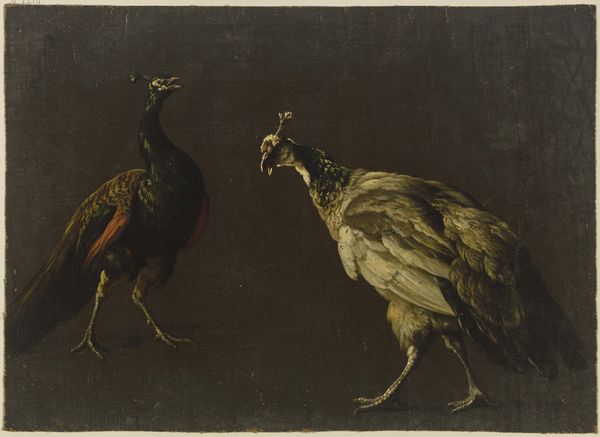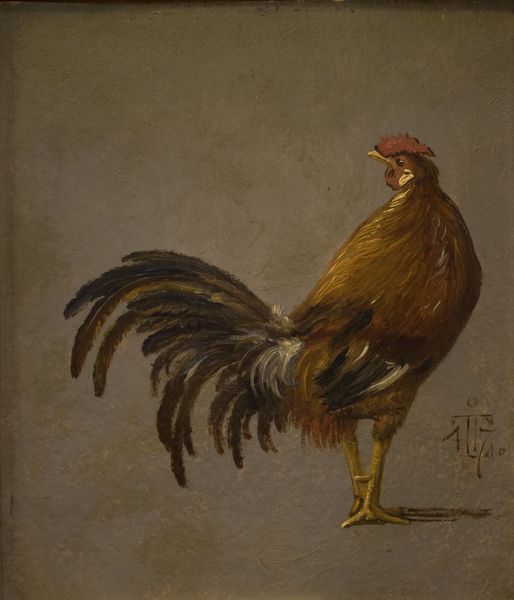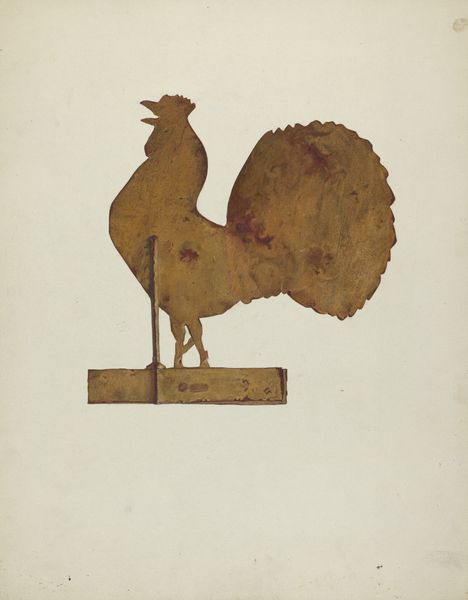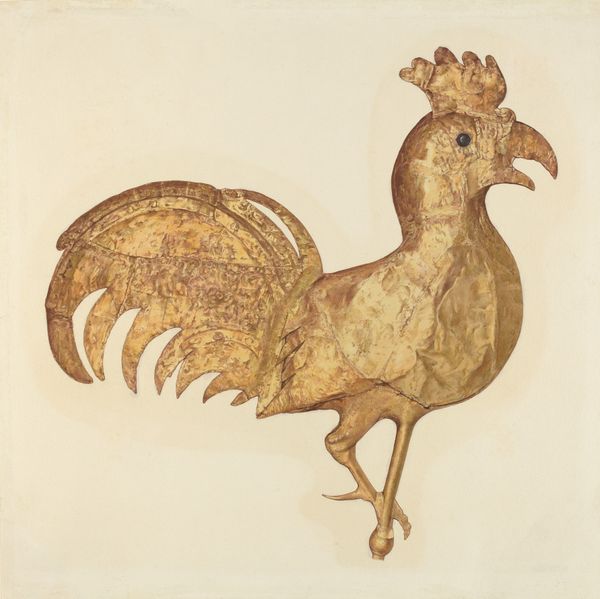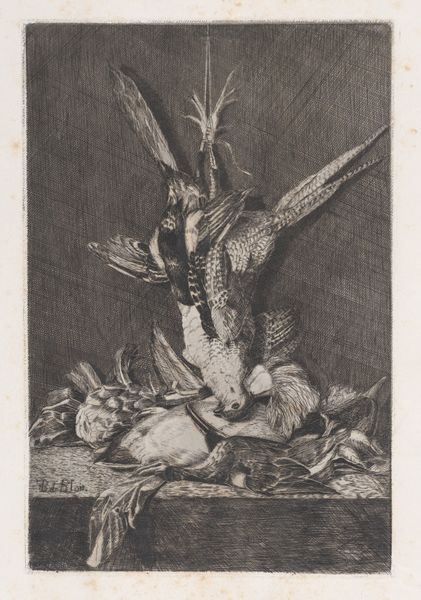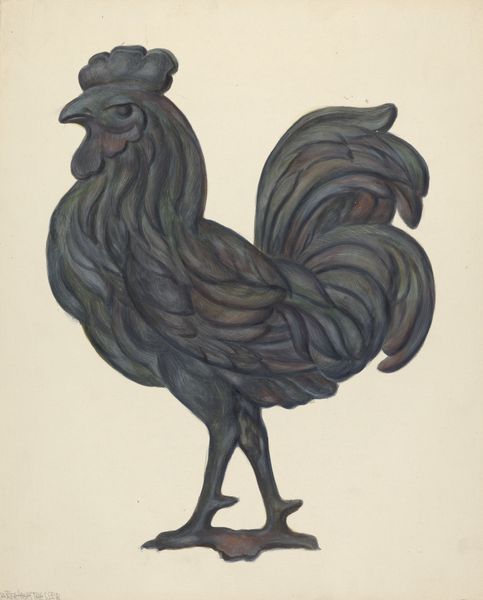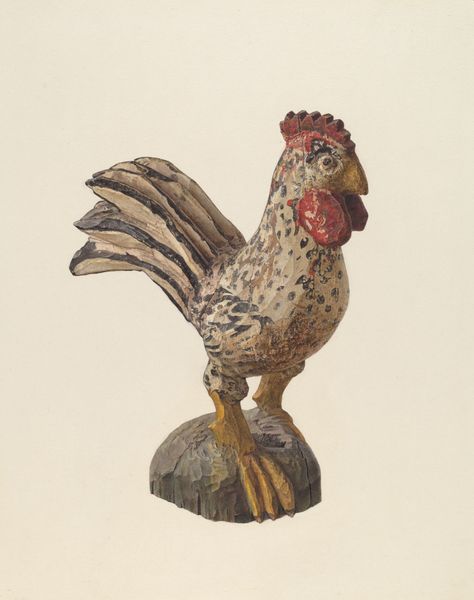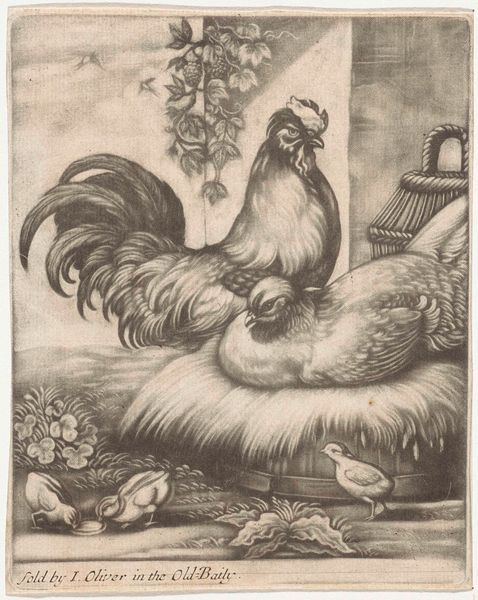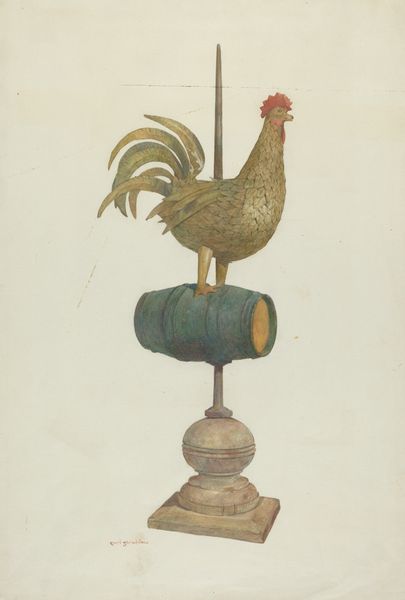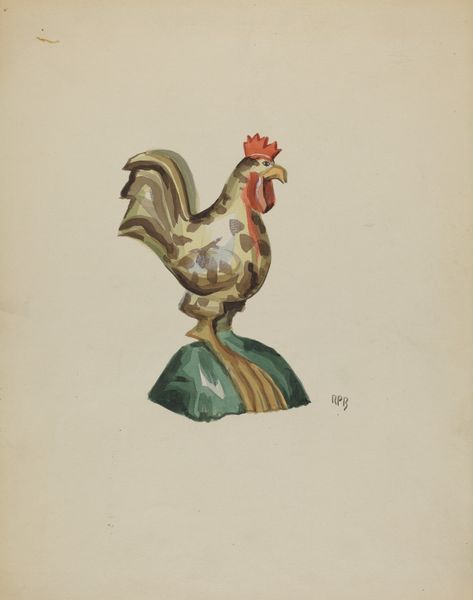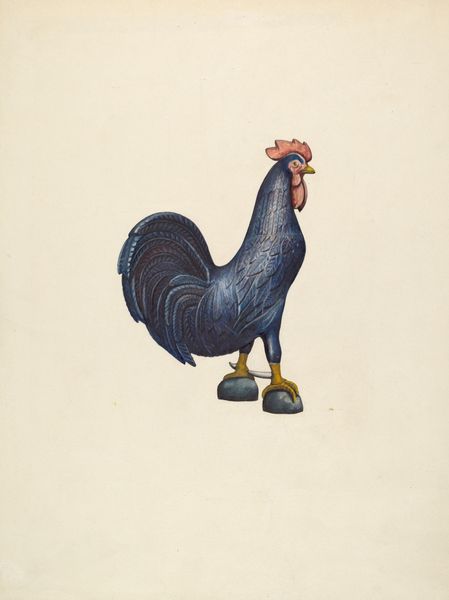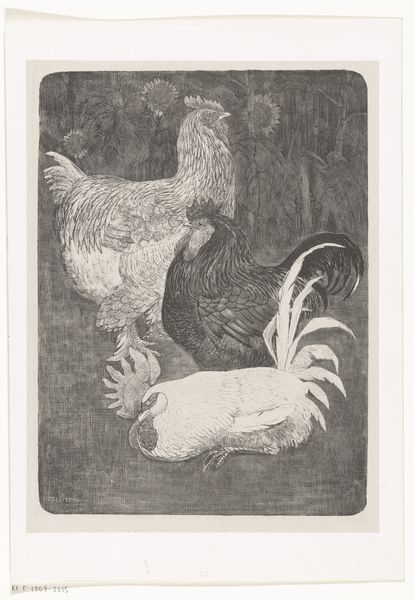
Dimensions: height 95 cm, width 78.5 cm, depth 8 cm
Copyright: Rijks Museum: Open Domain
Curator: Well, this is quite striking. My initial reaction is one of stark contrast – the plumage against the dark backdrop...almost theatrical. Editor: Indeed. What you're observing is Willem van Aelst’s "Still Life with Fowl," created around 1658. A classic example of Dutch Golden Age painting, and the growth of wealth allowing for elaborate displays. The artist meticulously used oil paint to achieve these effects, and how consumption drove production in the Baroque period is always a delight to inspect. Curator: It's difficult to ignore the sheer detail lavished upon those feathers. See the way light glances off each individual plume, the variety of textures rendered so faithfully? It’s a very careful study in light and shadow; almost as if the avian subjects are posed on a stage. It brings a distinct feel. Editor: It's a visual feast, certainly, but think about what's not visible: the hunter, the cook, the market. This type of artwork wasn't merely a pretty decoration. It signifies very specifically the ability to have the purchasing power for something like this in the 1600s. Van Aelst positions fowl as signifiers of cultural status and the economics that support this period, which really speaks to a transition in social structure. Curator: Perhaps. Still, the composition is what draws my eye: the deliberate arrangement of forms creating a harmonious whole. It’s almost mathematical. The eye dances between the birds, tracing lines of sight and implied diagonals. Consider how Aelst has carefully considered compositional symmetry. Editor: Sure, formal artistry exists, but in thinking of how a patron may have enjoyed this piece, the social narrative comes into play: it speaks volumes about wealth and access. This display is a narrative itself, created and reinforced by a network of labor and exchange that permeates even the silent canvas, influencing aesthetics directly. Curator: I suppose in appreciating the whole process involved, the real story behind each painting adds greater richness, whether or not intended originally. Editor: Exactly. It's not just a painting. It is what happened that made this kind of painting exist. It all is the sum total of history as we examine it.
Comments
rijksmuseum about 2 years ago
⋮
Two dead roosters, a water rail, and a kingfisher hang from cords upside down above a marble slab. Are the flies on them painted, or real? Willem van Aelst not only imitated what he saw, but also transformed it into an elegant composition. The subtle grey, violet, and blue hues make this a special painting, which was already a sought-after collector's item in its own time.
Join the conversation
Join millions of artists and users on Artera today and experience the ultimate creative platform.
